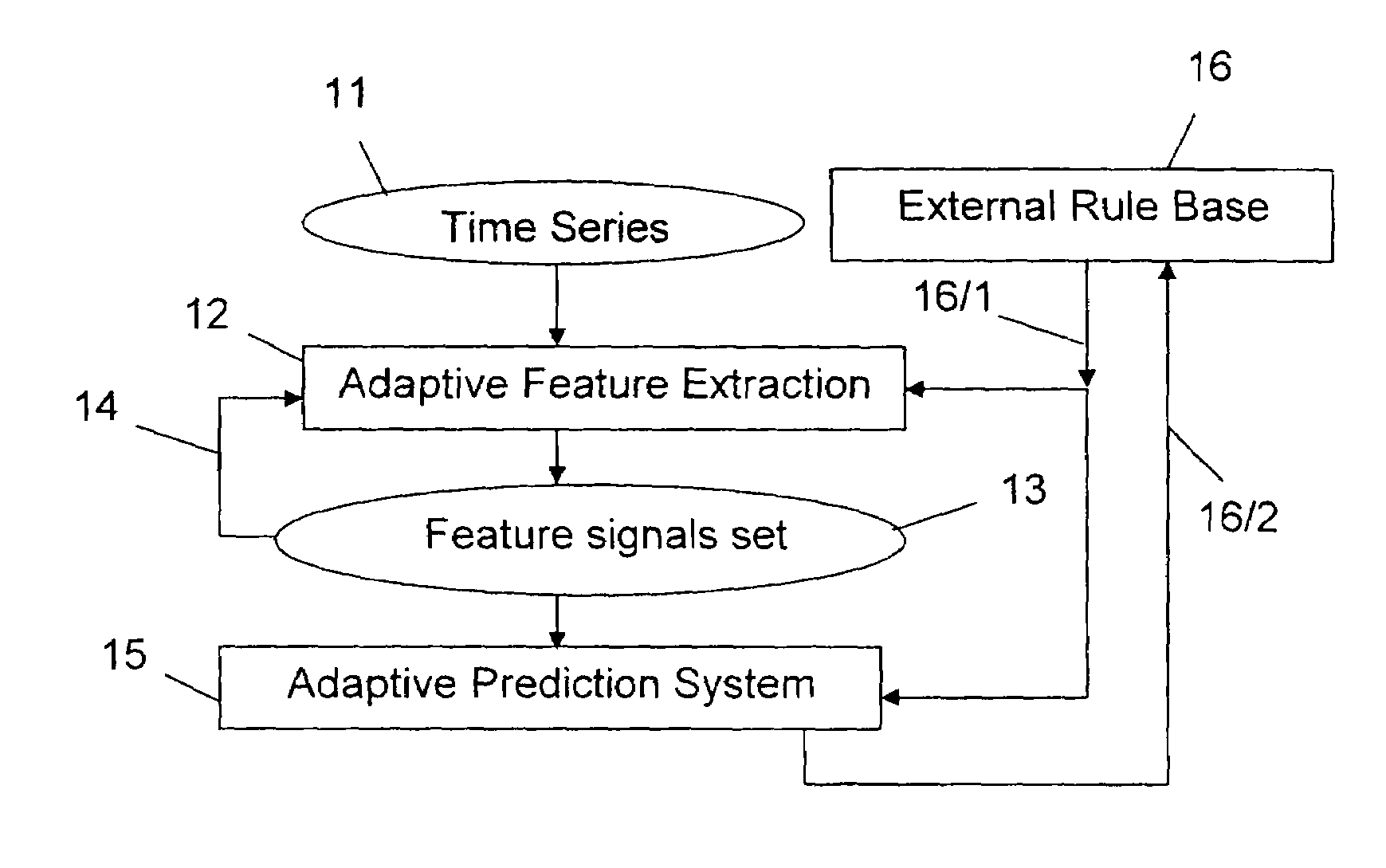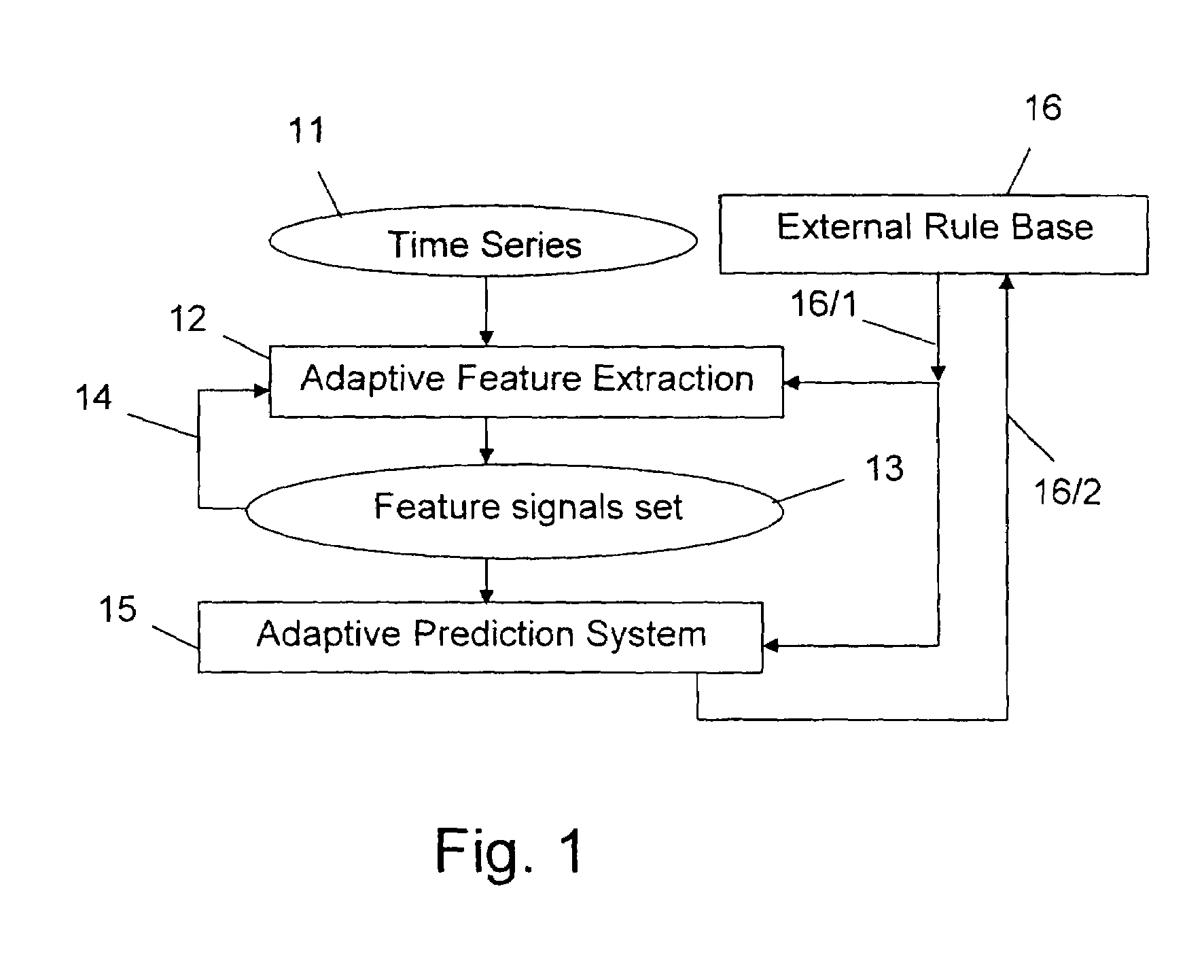Adaptive prediction of changes of physiological/pathological states using processing of biomedical signals
- Summary
- Abstract
- Description
- Claims
- Application Information
AI Technical Summary
Benefits of technology
Problems solved by technology
Method used
Image
Examples
example 1
Arrhythmia Prediction Using ECG Signal
[0309]According to this example, the input is an ECG tracing signal and the output is an arrhythmia (in this example, SVT—Supraventricular Tachycardia) prediction. The following notions are to be made with respect to this example:[0310]1. By use of adaptive segmentation, the ECG signal is divided into separate heartbeats by detecting the corresponding R-waves, as described with respect to the ECG algorithm); the patient-specific adaptation algorithm learns the normal heartbeat morphology, thus, clustering the different heartbeat morphologies while taking into consideration noise cancellation through environmental analysis. By selecting the R-waves of all determined true beats, a (new) HR signal is extracted from the time series representing the ECG signal.[0311]2. An adaptive GLRT based segmentation algorithm is employed on the HR signal, dividing it into quasi-stationary segments (FIG. 10a). It can be seen that the segmentation mainly delineate...
example 2
Epilepsy Prediction Using EEG and ECG Signals
[0318]The inputs to the prediction system are the EEG and ECG signals, and the output is epilepsy prediction.[0319]1. The EEG signal is adaptively segmented into quasi-stationary segments using the GLRT-based adaptive segmentation algorithm.[0320]2. The following features are extracted from each EEG segment:[0321]Variance.[0322]Fractal dimension.[0323]Synchrony measure.[0324]3. Temporal transient morphology features (pattern recognition) (using matching pursuit algorithm).
[0325]Based on temporal environmental behavior (energy, frequency, etc.) and morphology features, a spike-detection algorithm is implemented. FIG. 6 depicts the EEG segments boundaries and detected spikes in a 30-seconds ‘stretch’ of the recorded trace.
[0326]Referring to FIG. 6, it shows the EEG segments that were identified by using adaptive segmentation process in the way described herein. The boundaries of the identified segments are indicated by reference numerals 1 ...
PUM
 Login to View More
Login to View More Abstract
Description
Claims
Application Information
 Login to View More
Login to View More - R&D
- Intellectual Property
- Life Sciences
- Materials
- Tech Scout
- Unparalleled Data Quality
- Higher Quality Content
- 60% Fewer Hallucinations
Browse by: Latest US Patents, China's latest patents, Technical Efficacy Thesaurus, Application Domain, Technology Topic, Popular Technical Reports.
© 2025 PatSnap. All rights reserved.Legal|Privacy policy|Modern Slavery Act Transparency Statement|Sitemap|About US| Contact US: help@patsnap.com



